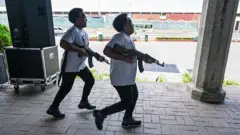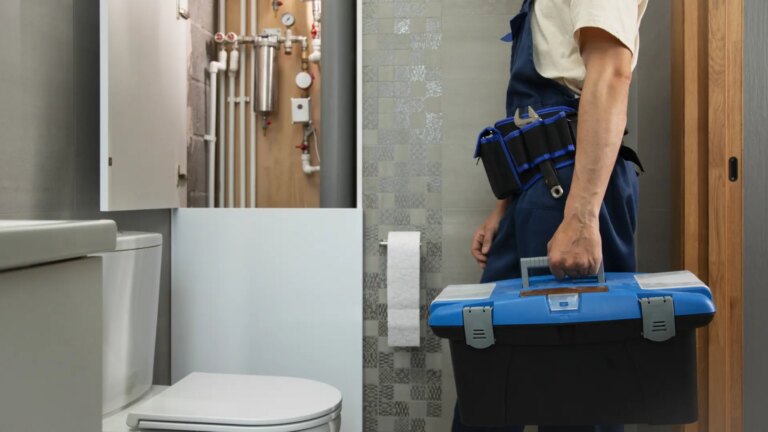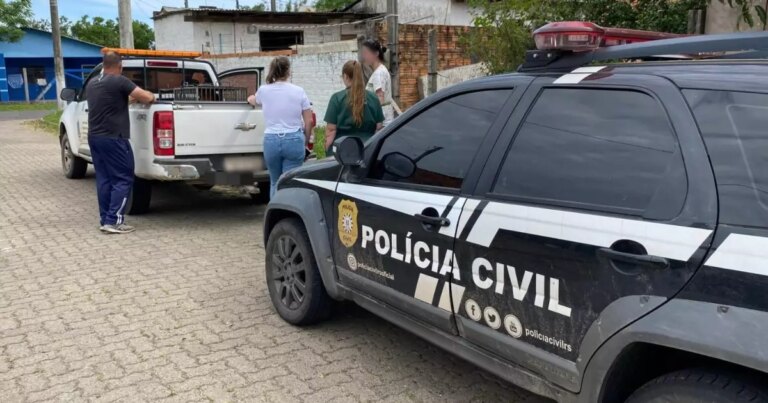
image source, Getty Images
The arrival of the USS Gerald R. Ford in Latin American waters marked a milestone in the escalating tensions between the United States and Venezuela.
This represents the largest US military presence in Latin America since the 1989 invasion of Panama, and like Manuel Antonio Noriega more than 30 years ago, Nicolas Maduro has been accused of drug trafficking, charges he rejects.
The United States remains vague about its intentions to deploy the world’s newest and largest aircraft carrier near the Venezuelan coast.
However, Caracas already appear to be preparing to attack.
Venezuela’s Minister of Defense, Vladimir Padrino López, announced this Tuesday the “massive deployment” of the army, navy, air force, riverine forces, missile forces, and civilian militias across the country to counter what he sees as threats to the regime of Nicolas Maduro.
Padrino López added in a televised message that Maduro had ordered the deployment of “almost 200,000” soldiers as part of the operation.
The arrival of the American “supercarrier” is being seen as an escalation of the military operation pushed by President Donald Trump against a suspected drug cartel operating in Venezuela that has already claimed the lives of more than 75 people aboard boats and semi-submarines.
But some analysts say it could be part of a broader strategy to weaken or even topple President Nicolas Maduro, whose government the U.S. government views as illegitimate after last year’s presidential election was labeled fraudulent by opposition parties and international organizations.
Can Nicolás Maduro’s Venezuelan military resist an attack from the world’s largest military power?
“The military still retains a vestige of its former self.”
President Maduro asserted in September that more than 8 million people were enlisted to protect Venezuela and suggested he could create a militia of that size.
This figure has been widely questioned by experts.
“That’s not true. The actual number is much lower. President Maduro received less than 4 million votes last year,” James Storey, a former ambassador to Venezuela who was stationed at the US embassy in Bogotá from 2020 to 2023, told BBC Mundo. And it is an army with a high desertion rate.
According to a report by the International Institute for Strategic Studies (IISS), Venezuela has 123,000 active military personnel, as well as 220,000 militia members and 8,000 reservists.

image source, Getty Images
The story goes that Venezuela’s military is generally untrained and unequipped, and many Chavismo militias don’t even have weapons. “There may be units in the military that are (combat capable), but they are not particularly effective as a combat force.”
He added that Venezuela’s military is “not a shadow of what it once was,” but acknowledged there are “some unique resources in the region.”
Although the U.S. military far outnumbers the Venezuelan military, Caracas is theoretically equipped with advanced military equipment.
In addition to about 20 Sukhoi planes purchased from Russia by former President Hugo Chávez in 2006, Venezuela acquired more than a dozen U.S.-made F-16s in the 1980s, when Caracas was Washington’s main regional ally.
“The Sukhoi attack aircraft are superior to other attack aircraft in the region, and some are still in service. I think one or two of the F-16s are still in service,” Storey noted.
Anti-aircraft missiles and drones
Amid tensions with the United States, Maduro declared in late October that Venezuela had deployed 5,000 Russian-made Igla-S anti-aircraft missiles to “key air defense sites.”
“Every military in the world knows the power of Igla S,” President Maduro added during a televised military event.

image source, Getty Images
Igla-S is a short-range, low-altitude, man-portable air defense system with the ability to shoot down cruise missiles, drones, helicopters, and low-flying aircraft.
Venezuela also has Chinese VN-4 armored vehicles and recently became the only country in South America to possess armed drones with attack capabilities, which President Nicolás Maduro unveiled at a military parade in 2022.
The Antonio Jose de Sucre 100 and 200 (ANSU-100 and 200) are Venezuelan-made drones derived from modernized versions of Iranian-made drones.
Venezuela also received from Iran a Peikarp III fast attack craft equipped with anti-ship missile launchers.
To all this will be added the Pantsir-S1 and Buk-M2E surface-to-air missile systems. They were recently transported to Caracas on an Il-76 transport plane, said Alexei Zhuravlev, First Deputy Chairman of the Defense Committee of the Russian State Duma.
But much of this material exists only in theory, says Andrei Servin Pont, an international foreign policy and defense analyst and chairman of the Regional Coordinator for Economic and Social Research (CRIES).
“There is a huge discrepancy between what Venezuela has in theory and the material it has in practice,” he said in an interview with BBC Mundo.
Networks that can be “easily” neutralized
Interest in the South American country’s air defense system is growing amid reports suggesting further escalation could include direct attacks on Venezuela.
But Andrei Servin Pont said much of the network is either defunct or could be “easily neutralized” with American technology, as was the case with the Russian-made Pechora surface-to-air missile system, whose technology dates back to the 1960s.

image source, Getty Images
Venezuela also has more effective Buku missile systems deployed around Caracas, but it would not be particularly difficult for the United States to neutralize them, Selvin Ponto estimates.
“Additionally, availability is very low due to the lack of spare parts,” he says.
As for the 5,000 Igla-S missiles Maduro boasted about in late October, Servin Ponto said that number was correct.
“But there are only about 700 Igla-S launchers, and that’s still a large number, which is worrying, because in the hands of state armed groups they could be very dangerous. Not necessarily for U.S. operations, but for civilian operations and all kinds of low-altitude helicopters and aircraft.”
“Long battle”
He said the Maduro regime’s current strategy suggests that all these military weapons could eventually be distributed to the Venezuelan population after a possible attack by the United States.
In particular, some fear it could fall into the hands of armed groups such as the National Liberation Army (ELN) or the FARC rebel group.
The purpose of such a strategy would be to threaten a future transitional government with chaos and instability in Venezuela.
Many analysts estimate that Mr. Maduro and his circle are preparing for a guerrilla war.
Venezuelan Interior Minister Diosdado Cabello threatened in September that the country was ready for a “long war.”
Shortly after, Maduro’s government ordered soldiers from the Bolivarian National Army (FANB) to teach residents of poor areas how to use weapons.
Former ambassador James Storey dismissed the possibility of Venezuelans joining Maduro in such a campaign, saying: “Maduro is not a very well-loved figure in the military or among the Venezuelan people, so I don’t think people would follow him or support him in a guerrilla war.”
“He didn’t even get 4 million votes in the last election!” he repeats.
Nicolás Maduro received about 6.4 million votes, according to the Venezuelan government-controlled National Electoral Council, a number that is questioned by Venezuela’s opposition parties and many international organizations.
How prepared is Venezuela for conflict?
Although the Venezuelan government has become increasingly bellicose and anti-American, analyst Andrei Servin Ponto asserts that the Venezuelan military is unprepared for conflict.
He explains that for the past 25 years, the Bolivarian National Armed Forces (FANB) has operated under the military concept of “periodization of war,” which envisions conflicts unfolding in manageable blocks or stages.
The first stage would be a stage of internal instability fostered by foreign interference, followed by a second stage that would involve neighboring countries, creating a “peer conflict” that could lead to US intervention.
“This will lead to a quarter of a long period of popular resistance, where demobilized military forces and other social movements are expected to retain arms and disperse among the population to fight a guerrilla war against the American occupation,” points out Selvin Pont.
“Venezuela’s conventional weapons systems could be very useful in a conflict with neighboring Colombia or Brazil,” he continues.
But he insists they are not a real threat to the United States.

Subscribe here Sign up for our new newsletter and we’ll bring you the week’s best content every Friday.
Don’t forget that you can also receive notifications in the app. Please download and activate the latest version.



